

Selecting a High School
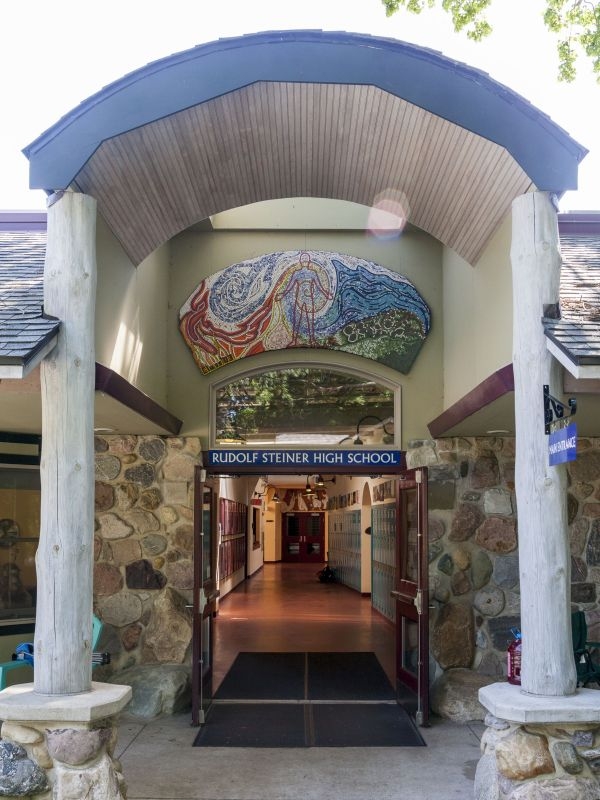
Selecting a High School
Advice from Veteran Waldorf Educators
Choosing the right high school can feel like one of the most significant decisions a family will make in their child’s educational journey.
To bring clarity to this decision, we turned to two of our most experienced educators at the Rudolf Steiner School of Ann Arbor: Margot Amrine, a longtime Waldorf teacher with over four decades of experience, and Dr. Siân Owen-Cruise, our former School Administrator, who has guided countless families through the high school selection process.
Today’s parents listen to and respect their children’s perspectives more than ever before- a positive shift in family dynamics. But as Margot reminds us, that doesn’t mean parents should surrender their leadership on big decisions.
“In our family we said that Waldorf Education for 9th and 10th grade was essential. At 11th grade, a different kind of maturity sets in; if our children had made compelling reasons to leave then, we would have considered. We never had these discussions!”
Dr. Owen-Cruise expands on this, acknowledging that social pressures play an outside role in an 8th Grader's thinking:
“It's natural for teenagers to focus on their peers and social dynamics when thinking about high school. As parents, we listen, we understand, and we take their feelings seriously- but ultimately, we need to lead this decision with wisdom and foresight.”
Dr. Owen-Cruise often frames the conversation with the rising student in the following way:
“Your parents will choose where you receive your high school education, with your input. YOU will choose where you go to college, with our parental input.”
Many families who have walked this path find that their children- whether they started in Waldorf Education or joined from another school-ultimately express gratitude that their parents guided this decision with their long-term development in mind.
Here are some other helpful tips and information when thinking about our own High School:
Waldorf Graduates Pursue Meaningful Careers
“Will My Child Succeed After Waldorf High School? The Research Says Yes” - Blog Article
Parents often ask: Does a Waldorf education prepare students for college, careers, and beyond? The answer is a resounding yes. Studies show that Waldorf graduates not only attend college at high rates but also excel in fields like science, medicine, law, and technology. Employers and universities consistently praise their ability to think critically, communicate effectively, and adapt to a changing world. Want to know why? This article dives into the research and real-world successes of our alumni.
The Joy of a Phone-Free School: How Our Students Thrive Without Screens
"The Joy of a Phone-Free School: How Our Students Thrive Without Screens" - Blog Article
In an age where screens dominate every aspect of life, imagine a school where students engage in real conversations, dive into hands-on projects, and focus fully in class—without the pull of notifications. Our phone-free policy isn’t just a rule; it’s a game-changer. See how it shapes our students’ social and academic lives!
The Joy of a Phone-Free School: How Our Students Thrive Without Screens
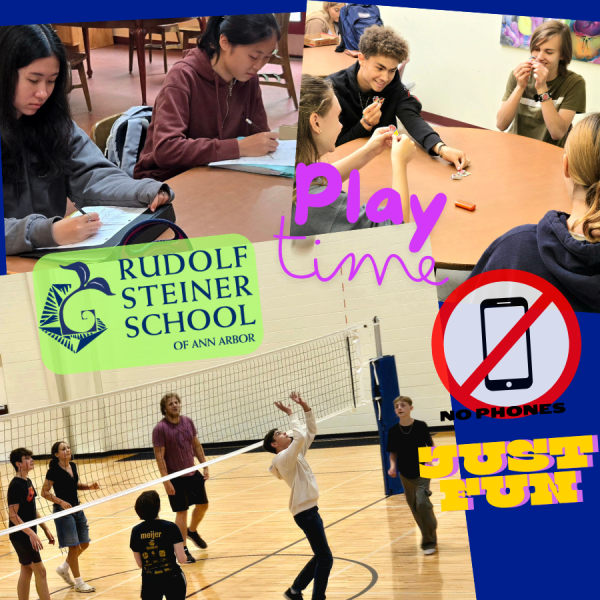
The Joy of a Phone-Free School: How Our Students Thrive Without Screens
Imagine a typical school day where students, between classes and during breaks, are glued to their smartphones—scrolling through social media, playing games, or texting. Conversations are sparse, eye contact is minimal, and the vibrant energy of youthful interaction seems subdued. Now, contrast this with a school environment where smartphones are set aside: students engage in lively face-to-face discussions, participate in spontaneous games, and immerse themselves fully in classroom activities without the constant pull of notifications. This is the reality we’ve cultivated at Rudolf Steiner School of Ann Arbor, embracing a phone-free policy that fosters genuine connections and holistic development.
The Deeper Engagement of Phone-Free Education
At our school, we’ve observed that removing smartphones from the school day does more than just eliminate distractions—it rekindles a deeper, more meaningful engagement among students. Freed from screens, students rediscover the joy of direct communication, collaborative problem-solving, and hands-on learning. This environment aligns seamlessly with the principles of Waldorf education, emphasizing experiential learning and nurturing the whole child.
We Are Phone-Free, Not Tech-Free
While our school maintains a phone-free environment during school hours, we are not devoid of technology. In fact, our curriculum incorporates technology in age-appropriate ways to ensure students are prepared for the digital world:
• Middle School: Students are introduced to computers and the internet in an intentional way that supports learning. Additionally, our middle school robotics club fosters interest in technology and engineering through hands-on projects. https://www.steinerschool.org/programs/extracurricular-activities.cfm
• High School: Our state-of-the-art computer lab facilitates courses in coding, digital literacy, and other computer science subjects. We also have an active high school robotics club where students collaborate on competitive projects that develop real-world problem-solving skills. https://www.steinerschool.org/about-us/waldorf-education.cfm
Many of our graduates go on to thrive in technology fields, excelling in computer science, engineering, and data analysis. Research shows that Waldorf graduates develop strong interdisciplinary thinking skills that prepare them for success in fields that require both creativity and technical expertise.
Leading the Way in Ann Arbor
Our commitment to a phone-free school day positions us as pioneers in the Ann Arbor educational community. While some other local schools have implemented partial restrictions, our comprehensive approach ensures that students remain unplugged throughout the day—including breaks and transitions between classes.
Several Ann Arbor schools are recognizing the value of limiting phone use:
• Forsythe Middle School and Tappan Middle School both require students to keep phones in lockers during school hours. https://forsythe.a2schools.org/our-school/cell-phone-policy, https://tappan.a2schools.org/our-school/cell-phone-policy
• Huron High School has introduced classroom phone storage policies in its Mathematics and English departments to help students stay focused. https://thehuronemery.com/9731/news/cell-phone-use-teacher-led-procedures-to-enrich-student-experience/
The Transformative Power of Disconnecting
The shift to a phone-free environment has yielded profound benefits:
• Enhanced Academic Focus: Without the allure of smartphones, students engage more deeply in lessons, leading to improved comprehension and retention.
• Strengthened Social Bonds: Face-to-face interactions during breaks and collaborative projects foster authentic relationships and empathy among students.
• Improved Mental Well-being: Reducing screen time has been linked to decreased anxiety and stress, allowing students to be more present and mindful.
Embracing a Connected Future Without Phones
As more schools recognize the value of limiting smartphone use, it’s evident that this movement is not about restricting technology but about reclaiming the essence of human connection and focused learning. By leading the way in this initiative, Rudolf Steiner School of Ann Arbor not only adheres to the foundational principles of Waldorf education but also prepares students for careers in STEM, the arts, and beyond.
We invite families seeking a nurturing, distraction-free educational environment to join us in this journey, where students can truly engage with the world around them and develop into well-rounded individuals.
Explore the experiences of other schools with phone-free policies:
• “New data reveals shocking trend since school mobile phone ban”
- “The big smartphone school experiment”
https://www.thetimes.co.uk/article/inside-schools-ban-smartphones-6knb8qtfc
- “Cell phones hinder classroom learning. Texas should tell school districts to lock them up”
- "Waldorf Schools are Media Literacy Role Models"
https://www.steinerschool.org/about-us/waldorf-schools-are-media-literacy-role-models/
The Importance of Parent Education
Raising children who will become happy, healthy, thriving adults is one of the most challenging and important roles anyone can have. At Rudolf Steiner School of Ann Arbor, we engage not only the student but their families as well. We believe in meaningful relationships, where our trained teachers work with families over multiple years to understand how to best support each child. Our in-depth narrative grading system, our ongoing adult education and volunteer opportunities, and our rich cultural and festival life all serve to create a welcoming community where families feel supported and engaged.
This article by Tracy Trautner was originally posted by Michigan State University Extension
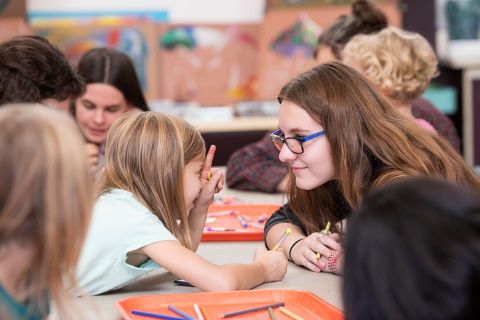
Parenting, for many, is the most important and challenging job to ever have and a role that gets little recognition. Parents and other primary caregivers of all types (foster parents, grandparents, adoptive parents, etc.) can all use an opportunity to learn tips and new strategies to relate with our children and enjoy being with them. It also allows an opportunity to engage with other parents that may be having similar issues and struggles.
Today, there are new parenting challenges to overcome. Skills, routines and values were passed from generation to generation and parents could rely on networks of support to help them parent. Compared to past generations, many parents and families have become isolated and are raising children in silos. These parents are trying to figure it out alone. The skills a child needs to be successful have changed as well.
Over the years, each generation sees a change in what society considers parenting issues. Currently, families struggle with behavior management issues including lack of expectations, child supervision and excessively severe and inconsistent punishment on behalf of the parent. According to John Geldhoff, an Oregon University assistant professor of behavioral and health science, all parents—high income, low income, mandated and non–mandated—can benefit from evidence-based parenting education. Parents who have attended classes and learned effective discipline and parenting techniques report having children with higher grades, fewer behavior problems, less substance abuse issues, better mental health and greater social competence.
Parenting education programs offer support and education that can address issues and make parenting easier, more enjoyable and can strengthen a child’s ability to thrive. Building Early Emotional Skills in Young Children is one of many parenting programs offered by Michigan State University Extension. Many other reliable sources of information for parents are available to meet their needs. Resources are readily available online through YouTube videos, research-based websites, in person, podcasts, blogs and books that are readily accessible. Before you engage with a parenting resource, check the source of the information to be certain it is research based and reputable.
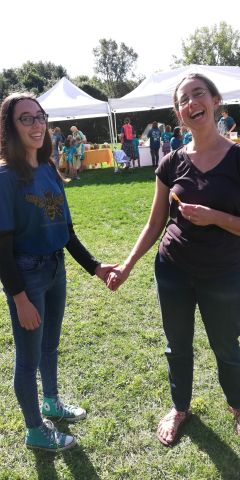 Your child’s childcare center or school, community center, or local library may offer in-person trainings. In-person parent education allows parents the options to ask pertinent questions to their situation and potentially meet other parents to share stories with. A frequent issue that is brought up is relatable to everyone in the class, quality discussions begins, and ideas are shared. Online classes may also offer valuable opportunities to explore materials at your own pace and connect virtually with other parents.
Your child’s childcare center or school, community center, or local library may offer in-person trainings. In-person parent education allows parents the options to ask pertinent questions to their situation and potentially meet other parents to share stories with. A frequent issue that is brought up is relatable to everyone in the class, quality discussions begins, and ideas are shared. Online classes may also offer valuable opportunities to explore materials at your own pace and connect virtually with other parents.
Parenting education can be seen as something negative, like it is a reflection on your ability to parent. Parenting education is not just for parents who are struggling or having severe problems with their children’s behavior—it can be an opportunity for parents to feel more confident as a parent, prevent future problems, enjoy being with their children and help their family get along.
We may invest time and money to take our new puppy to obedience class, take golf lessons or practice our swing, or take our family out to eat or on vacation as a way to invest in ourselves and our families. Similarly, parenting classes are an investment in our personal growth and our children’s future ability to build healthy relationships, make and retain friends, get a job and keep it, and become great parents themselves.
To find more valuable, research-based information about parenting, check out the following resources:
School Trips as a Rite of Passage
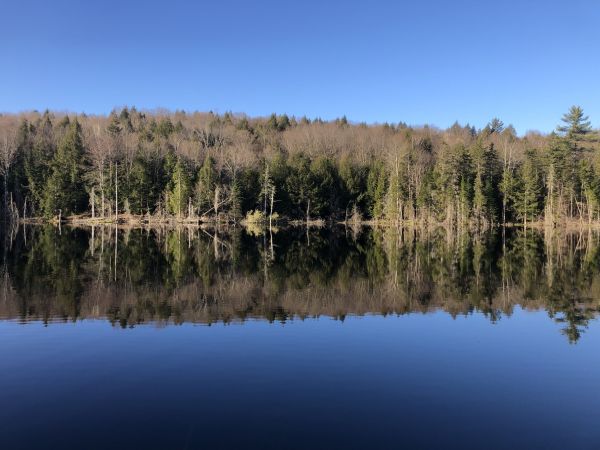
Our 8th grade class recently returned from its annual class trip, a 10-day wilderness adventure in New England. This 8th grade trip is a rite of passage for students, the culmination of progressively longer and more adventurous excursions undertaken by the class teachers and students over the years.
At Rudolf Steiner School of Ann Arbor, we strongly believe these class trips are a vital part of the student experience. They foster a connection with the outdoors, offer opportunities for teamwork and class camaraderie, give some students an experience they might otherwise never have, and teach responsibility and self-knowledge. They also provide moments of joy, life-long memories, and shared experiences that further cement the bonds among the students.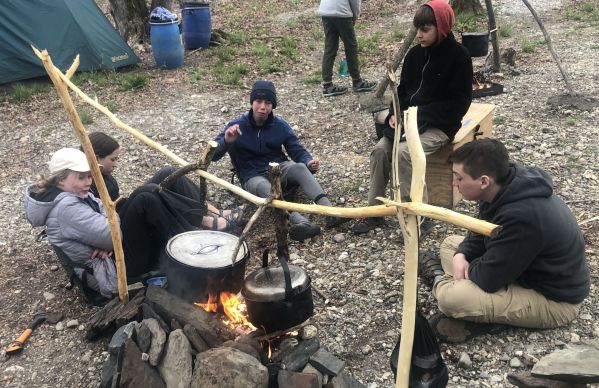
Typically, a class’s first overnight trip takes place in 3rd grade, where the class spends a night at a farm. This supplements the in-class work of 3rd grade, where students learn about farming, shelters, and ways people have lived and survived throughout history. By the time they reach middle school, the students have been on several overnight trips. In the middle grades, they spend a few nights in a dark-sky area as part of their astronomy studies and travel to Hocking Hills, Ohio, to further their lessons in mineralogy and geology.
The 8th grade trip is a wilderness adventure experience. RSSAA has generally used two organizations to help us with this experience: the Northwaters & Langskib camp based out of Temagami, Ontario or Kroka Expeditions, based out of Marlow, N.H. Each offers a program of canoeing and camping that challenges the students physically; requires them to work together to set up camp, cook food, clean dishes, take care of the canoes, etc.; and provides an opportunity for self-reflection, community sharing, and social and emotional growth. These trips are usually undertaken at the start of the school year, or even before the school year officially begins, as they are an excellent way to launch the class into their last year together before high school.
As an 8th grader teacher, I have experienced both the Northwaters and Kroka experiences — both were incredible and so important for my students. Last year, my class went to Kroka and paddled down the Battenkill River from Vermont to New York — the same path taken by this year’s group of 8th graders. My class enjoyed the challenges posed by canoeing along a swift-moving river — we had to navigate rapids, hairpin turns, fallen trees, lots of rocks, and ever-changing water depths. Despite the challenges, there is little to compare to the feeling of navigating your way down an isolated, scenic river, seeing birds and other wildlife on the shores, discovering the best place to pitch a tent, staring a fire and making food for your class, and chatting with friends by the fire as the stars emerge.
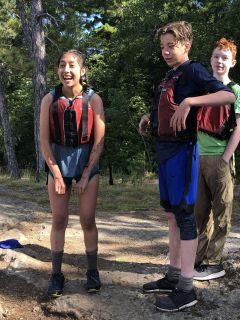 As is the intent of a rite of passage, when a class returns to school following these trips it is evident how much the students have grown, both as individuals who confronted and overcame their own personal challenges on the trip, and as a group who discovered strengths and vulnerabilities in their classmates they never knew before and who return with a shared experience that belongs only to them. Each year there is inevitably a student or two who do not want to take on the expected rigors of the trip, but upon return they are always glad they did and many say they now feel like they could accomplish anything!
As is the intent of a rite of passage, when a class returns to school following these trips it is evident how much the students have grown, both as individuals who confronted and overcame their own personal challenges on the trip, and as a group who discovered strengths and vulnerabilities in their classmates they never knew before and who return with a shared experience that belongs only to them. Each year there is inevitably a student or two who do not want to take on the expected rigors of the trip, but upon return they are always glad they did and many say they now feel like they could accomplish anything!
While the 8th grade trip is in many ways the culmination of these experiences in the grades and middle school, these types of trips continue for students at our high school. Ninth graders end their freshman year with a week at the Community Farm of Ann Arbor, while 10th graders take the knowledge they learned during their sophomore year for a week-long land surveying expedition at Camp Lookout on the northern shores of Lake Michigan. Seniors wrap up their RSSAA journey with two amazing adventures: a Zoology trip to Hermit Island, Maine, where they explore the flora and fauna of the ocean and tidal pools; and an adventure in Venice, Florence, and Rome, where they explore the artists, writers, and thinkers they learned about in the classroom for so many years.
These trips are a cherished and important part of our curriculum. I believe they play a central role in helping our graduates to be well-rounded citizens of the world, with the self-confidence to take off on their own life adventures.
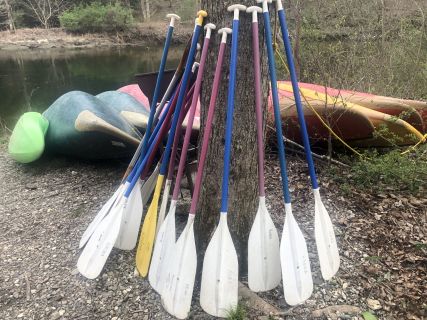
Weleda's Ties to Steiner
A long-time favorite in our school community and sold in our school store, Weleda products are on the cutting edge of regenerative farming and social responsibility, as well as being popular in the celebrity crowd. Here's a little history of the products, the mission of the company and its ties to Rudolf Steiner, founder of Waldorf education.
Originally posted in full by Chantel Tattoli in the New York Times on August 20, 2022
Calendulas look like daisies, smell like marigolds and possess powerful phytochemicals that can mend skin. At a garden in Schwäbisch Gmünd, Germany, Astrid Sprenger’s blond bob and turquoise pendant swung in the sun as she picked the fiery orange flowers by hand.
“It’s one of the only plants you can put on open wounds,” she said.
Dr. Sprenger, 56, who holds a Ph.D. in agricultural science from the University of Hohenheim in Stuttgart, is a head gardener at Weleda, a Swiss company perhaps best known for its ultrarich Skin Food cream. Sold in parrot green tubes, the moisturizer costs $12.49 an ounce.
Though Skin Food has gone by that name only since around 2010, its formula dates to 1926. In addition to extracts of calendula, it also contains concentrated forms of chamomile and wild pansy, as well as sunflower seed and sweet almond oils and beeswax.
The Skin Food line has expanded to include Skin Food Light, a less dense version of the original cream, along with a lotion and body and lip butters. According to Swati Gupta, Weleda’s head of e-commerce in North America, in 2020, the company sold a Skin Food product every five seconds. Weleda is developing new Skin Food cosmetics, including some for the face, with plans to debut them next year.
Farm to Tube
The plants used to make Skin Food and Weleda’s other products are grown worldwide. In Schwäbisch Gmünd, the 50-acre plot that Dr. Sprenger oversees runs wild-ish with some 260 species that include stonecrop and mistletoe. It is one of eight gardens owned by the company, which is based in Arlesheim, Switzerland, and sources from an additional 50 partner growers.
Occupying some 60,000 total acres, the web of gardens, which spans five continents, is roughly 70 times the size of Central Park.
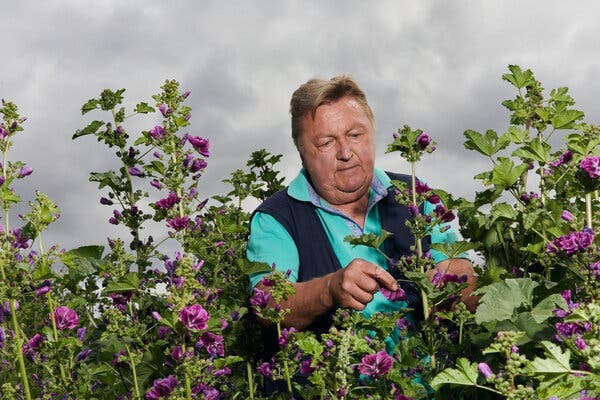
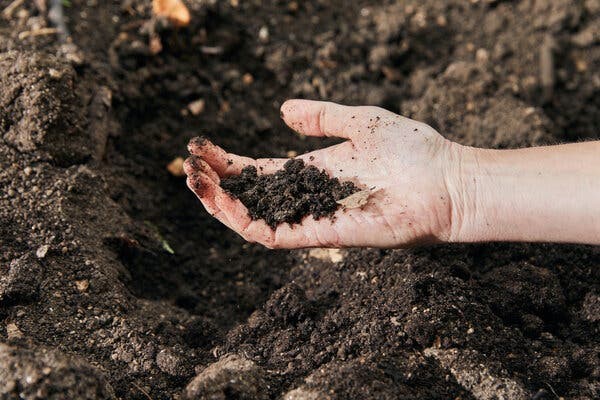
Last year, Weleda achieved B Corp certification, meaning its operations meet certain social and environmental criteria. It is also certified by the Union for Ethical BioTrade, which sets best practices for sourcing ingredients.
The gardens it owns are certified by Demeter, an organization that maintains the standards for the agricultural practice known as biodynamic farming, which Dr. Sprenger compared to regenerative farming — an organic method that focuses on soil health and forgoes elements of industrialized agriculture such as synthetic chemicals — but “on a higher level.”
The practice demands strict standards for biodiversity and soil fertility; at Weleda’s gardens, topsoil is not tilled and crops are both rotated and intercropped, or grown together in the same plot, with three to 10 other species. Another tenet of biodynamic farming is composting. “It’s not like poo,” Dr. Sprenger said as she plunged a trowel into a dark mound that disgorged bugs and a heady herbal odor. “It’s nice!”
The compost she was sifting through contained homeopathic additives, or preparations, made from fermented plants including yarrow and valerian. Preparations are also a requirement of biodynamic farming, and others are sprayed directly onto soil or crops. One, called horn manure, does include excrement. It is made by packing cow dung into cow horns that are buried underground for the winter and dug up in the spring; the dung is then extracted from the horns, swirled into rainwater at body temperature and flicked at the soil with a brush, not unlike how a priest sprinkles holy water.

Some growers see preparations as magic potions of sorts, claiming they sensitize soil to cosmic rhythms. Followers of what’s known as the biodynamic calendar sow, plant and reap crops based on the positions of the sun, moon, planets and stars. (While not necessary for Demeter certification, some of Weleda’s gardens operate this way, but not the one in Schwäbisch Gmünd.)
More demonstrable benefits of the preparations, Dr. Sprenger said, include fungus control, increased microbial diversity, nitrogen stabilization and the ability for soil to sequester larger amounts of carbon.
Calendulas grown in Schwäbisch Gmünd are used to produce Weleda’s Comforting Cream Bath cleanser for babies. “In high season, we encourage our office employees to help with the harvest,” Dr. Sprenger said.
Those used in its Skin Food products are farmed biodynamically near Frankfurt and transported to a lab in Schwäbisch Gmünd, just five minutes by foot from the garden, where they are heated in sunflower-seed oil at around 155 degrees Fahrenheit, cooled and pressed into a concentrate that is then incorporated into various formulas.

Steady Growth
Weleda’s first gardens, in Switzerland and Germany, were in operation at the time it was formed in 1921 by Ita Wegman, a physician, and Rudolf Steiner, a New Age philosopher who two years earlier opened the first Waldorf, or Steiner, school. Then known as Futurum AG, it has since inception produced pharmaceutical as well as cosmetic products (only the cosmetics are sold in the United States).
Both the company and the school were influenced by the spiritual science movement anthroposophy. Also founded by Steiner, its adherents believe that everything in nature is interconnected. Before he died in 1925, Steiner gave a series of lectures on alternative agricultural techniques, which laid the groundwork for what later became known as biodynamic farming, said Peter Staudenmaier, an associate professor of history at Marquette University in Milwaukee.
Steiner and his followers wanted “to heal the earth,” said Dr. Staudenmaier, who specializes in the political history of environmentalism. “Their mission was to regenerate the soils that had been abused and despoiled by industrial processes,” he added.
Steiner’s thinking about agriculture continues to inform that of the company he co-founded, which in 1928 was renamed Weleda in a nod to Veleda, a Germanic priestess and healer who lived during the first century A.D.
“One of the most important things that we as a society can do to combat the effects of climate change is more regenerative agriculture,” Rob Keen, the chief executive of Weleda in North America, said.
“Select Steiner teachings are not reflective of Weleda’s guiding principles upon which we were founded more than 100 years ago and by which we continue to be guided today,” he added.
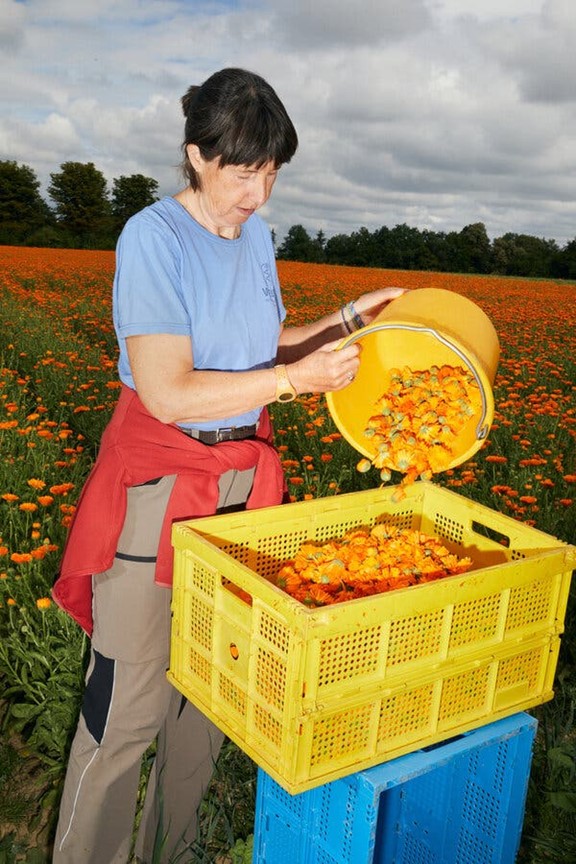
By 1931, five years after it introduced what would one day be called Skin Food, Weleda had opened an arm in the United States. Ahead of and during World War II, the company conducted business with the Nazi Party in Germany. It later made an effort to reconcile with this period in its history by issuing an apology to Holocaust survivors and opening its archives for academic research. Dr. Staudenmaier explored the Nazis’ connections to Weleda and other biodynamic growers in a 2013 research article. “Like any historian, I do wish that a company like Weleda would pay more attention to the complexities in its own history,” he said.
Domestically, its products were mainly sold at independent pharmacies and health food stores until 1984, when the grocer Whole Foods began to stock them.
According to Ameena Meer, who formerly worked as a creative director for Weleda in North America, Skin Food started to become more widely popular in 2017, around the time that consumers began to seek products that promised “dewy, glowy, glassy, glazed” complexions. The next year, Ms. Meer developed a marketing campaign to modernize Weleda in the United States, where she said it had a reputation as being old-fashioned.
Both the campaign and the renewed interest in Skin Food helped to usher in a “cool comeback” for Weleda, said Ms. Meer, 59, who lives in Los Angeles and now works as a wellness consultant and psychic. Major retailers that currently sell its products include Amazon, Target and, as of last year, Walgreens and CVS.
Food for Thought
“It’s thick,” Morgan Jerkins, a writer in New York, said of Skin Food.
“I feel like if I wear Weleda Skin Food, I’m going to be OK if I walk to the subway in February. I feel like it’s going to put up a fight.” Since she started using the product, Ms. Jerkins, 30, added that she has not had a need for foundation.
Skin Food also has fans in celebrities such as Gwyneth Paltrow and Sharon Stone. “I always have it in my set bag,” said Fiona Stiles, a makeup artist in Los Angeles who works with famous clients. “It’s so humectant!”
Ms. Stiles, 51, has carried the cream in her kit for 15 years. She particularly likes to use Skin Food as a topper, applying it with her palms onto the apples of clients’ cheeks for “a very even highlight.”
The product smells citrusy and, vaguely, of vanilla and bell pepper. “I imagine that people who love Campari, Ricola cough drops and the fragrance Bistro Waters, by the perfumer D.S. & Durga, tend to gravitate toward its scent,” said Porochista Khakpour, a writer in Los Angeles. Ms. Khakpour, 44, first discovered Skin Food more than a decade ago, in Berlin. “It’s deservedly iconic,” she added. “If someone is carrying it, I think they’re in the know.”
This year, Weleda promoted the Skin Food product line as part of a campaign to raise awareness of its agricultural practices. Called Save Earth’s Skin, it features the model Arizona Muse, 33, as its face. Ms. Muse, who lives in Ibiza, is also the founder of Dirt, an organization that funds biodynamic farming projects.
As a child, Ms. Muse attended Waldorf schools in Santa Fe, N.M., and Tucson, Ariz. She credits her interest in agriculture to her mother, who introduced her to Steiner’s anthroposophy movement, from which biodynamic farming was born.
“This is such a deeply protective approach,” Ms. Muse said of the method.
In the Save Earth’s Skin campaign, she compares soil to human skin, encouraging a twist on the golden rule: Do unto the planet’s dirt as you would your own epidermis.
Standing on the Shoulders of Gnomes
When we think of progress, many people refer to the “giants” who propel an organization forward. In reality, it’s all the “gnomes” who do the hard work that makes a community successful. This is certainly the case for Rudolf Steiner School of Ann Arbor. With humble beginnings in a three-room building near Cobblestone Farm in 1980, and eventually a home for our K-8 program on Newport Road, our growing community of inspired parents and teachers had a vision for a full PreK-12 program.
A high school study group was active for many years and eventually, the College of Teachers hired Agaf Dancy in 1996 to spend a year preparing to welcome 22 ninth and tenth graders in the fall. A valiant effort was made by Robert Black, Margot Amrine, Becky Schmitt and Judie Erb to build the high school on the Lower School's Newport Road campus, but there was resistance in the surrounding neighborhood. Judie proposed the Genesis building on Packard Road and Agaf found the ideal faculty team of Mary Emery (Humanities) and Geoff Robb (Science), who were trained Waldorf high school teachers. Navigating precarious waters, Judie, Margot and Fred Amrine won over a reluctant Board and in the fall of 1997, 22 high school students attended classes in the basement of the Genesis building.
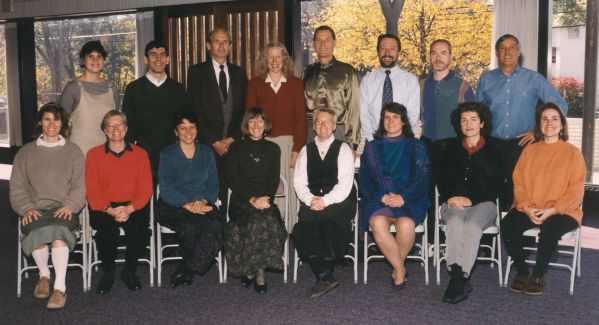
Ashlea Walton (HS’ 01) recalls, “It didn’t matter that our classes were small or that we were learning in a basement. Ms. Emery and Mr. Robb, along with the other faculty, made us feel part of a family and the subject areas were enlivened by their enthusiastic approach to teaching.”
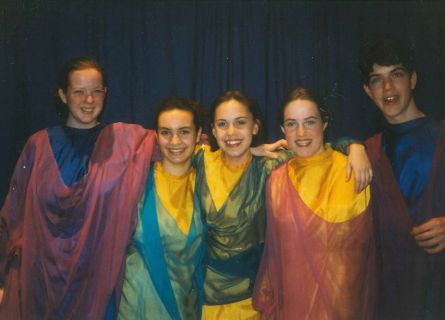
Caroline Freitag (HS '02) has known since 7th grade that she would be a Waldorf teacher and is now in her seventeenth-year class teaching, working right here at RSSAA! As one of the pioneering high school students, Caroline didn’t realize initially, “… but I was seeking a high school experience where I was seen by my teachers and peers. These strong personal relationships, along with a wide array of educational opportunities and trips, led me to pursue a college experience that offered the same things.”
Mary and Geoff led an amazing team of supporting faculty including Elena Efimova (Art), Robert Santacroce (Eurythmy), Erica Choberka (Biology), Janice Sanders (Instrumental), Barbara Brown (Bookbinding & Basket-weaving), David Van Eck (Technology) and Margot Amrine (History).
Erica Choberka was a teaching assistant at University of Tennessee, Knoxville and started her high school teaching career at RSSAA. Along with teaching most of the science classes, she briefly taught gym and writing as well - it was all hands-on deck. As a twenty-something herself, she would sometimes hear students listening to “Sublime” on their boombox and resisted the temptation to join them (she was a fan).
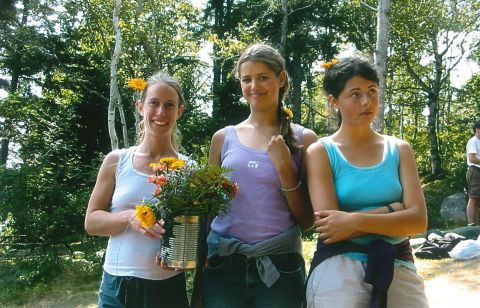
Elena Efimova held classes in her home art studio, where students were bussed daily. Her whole house was open to the students - snacks and drinks in the fridge, bathroom in the master bedroom, and a “hotel lobby” in the living room. Some students even stayed for dinner if their parents showed up late. The first senior mosaics (the Five Elements) were created by the first graduating class of five students and now hang in the hallway at the Lower School.
Eventually, we needed more space and in October 2001, a six-acre homestead and factory, located on Pontiac Trail, was purchased to be the permanent home for our growing high school. A staunch group of eager, professional volunteers, who dubbed themselves "The Four Musketeers" (Tim Vachon, Victor Leabu, Robin Grosshuesch and Robert Black) donated both skilled labor and materials to improve the Frame House and the Stone House buildings on the property into administrative spaces. The generous support of key donors, like the Fox family and Erb Downward family and Seyhan Eğe, empowered a whole host of volunteers from families, students, staff and faculty to put the final touches on the former factory building, built by Christman Company and sub-contractor Brivar. The new campus opened in the fall of 2002.
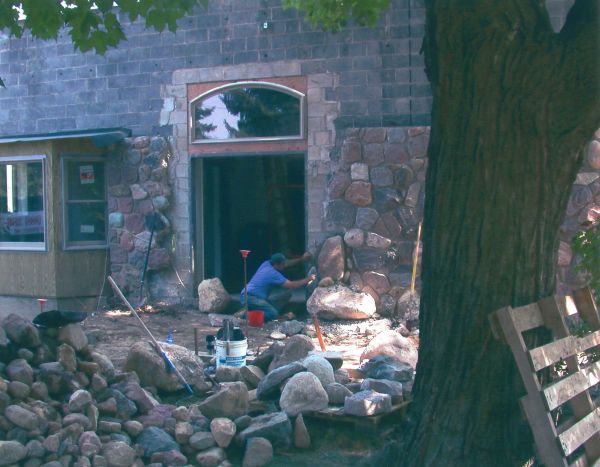
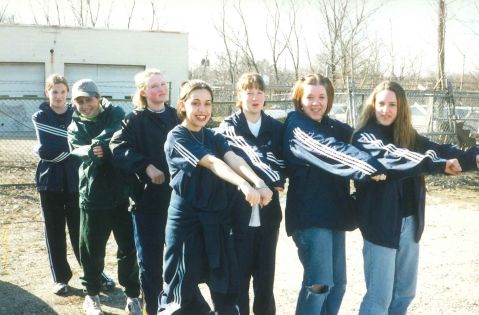
When Evan Schmitt (HS ’01) reflects on his time at RSSAA, “I don’t think a day goes by where I don’t apply the lessons I learned during my time at the Steiner School. So much of my job is talking with organizations about their role in creating a fairer, more secure, and more equitable global economy where individual rights are respected and protected. The seeds of that ethos were planted in me every day I walked into that school…by the teachers, the community, and my fellow students”. As a junior, Evan was key in organizing the first basketball team, coached by Bob Cosey. The sports teams gained momentum, sometimes “borrowing” 8th graders to complete the teams.
In 2008, RSSAA received our largest gift, a bequest of $834,000 from Seyhan Eğe’s estate. This gift paid for a dedicated middle school building in 2016 and launched the Inspire. Create. Lead. Capital Campaign for a high school campus expansion of a gym, lab, classrooms, and performance spaces in 2018, solidifying the commitment to a full PreK-12 Waldorf education.
Although our spaces are beautiful and inspiring, it’s our faculty that make our school an exceptional experience for students and families. A high school parent recognized that during the pandemic, everyone was managing stressful situations and our faculty and staff were doing the same. However, they were also striving to provide the best experience they could for our students along with taking pay cuts to balance the budget. That is devotion.
These stories have reminded us of where we’ve been and how many involved families helped us get there. We are entering the next phase of our development, with seeds being planted to eliminate debt and build an endowment, to create an outstanding Waldorf educational experience that supports our students with outstanding educators, passionate administration, facility maintenance, and financial stability.
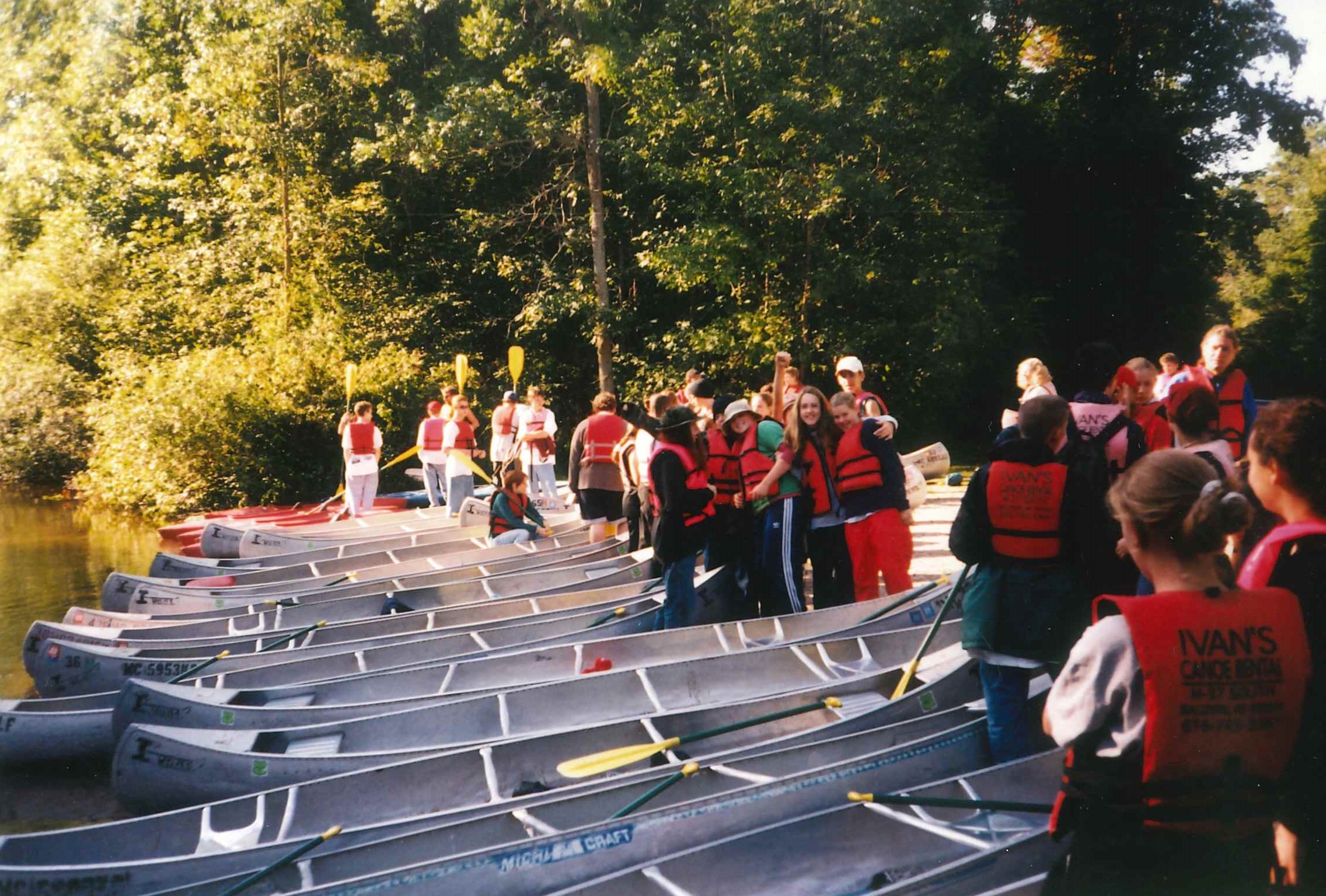
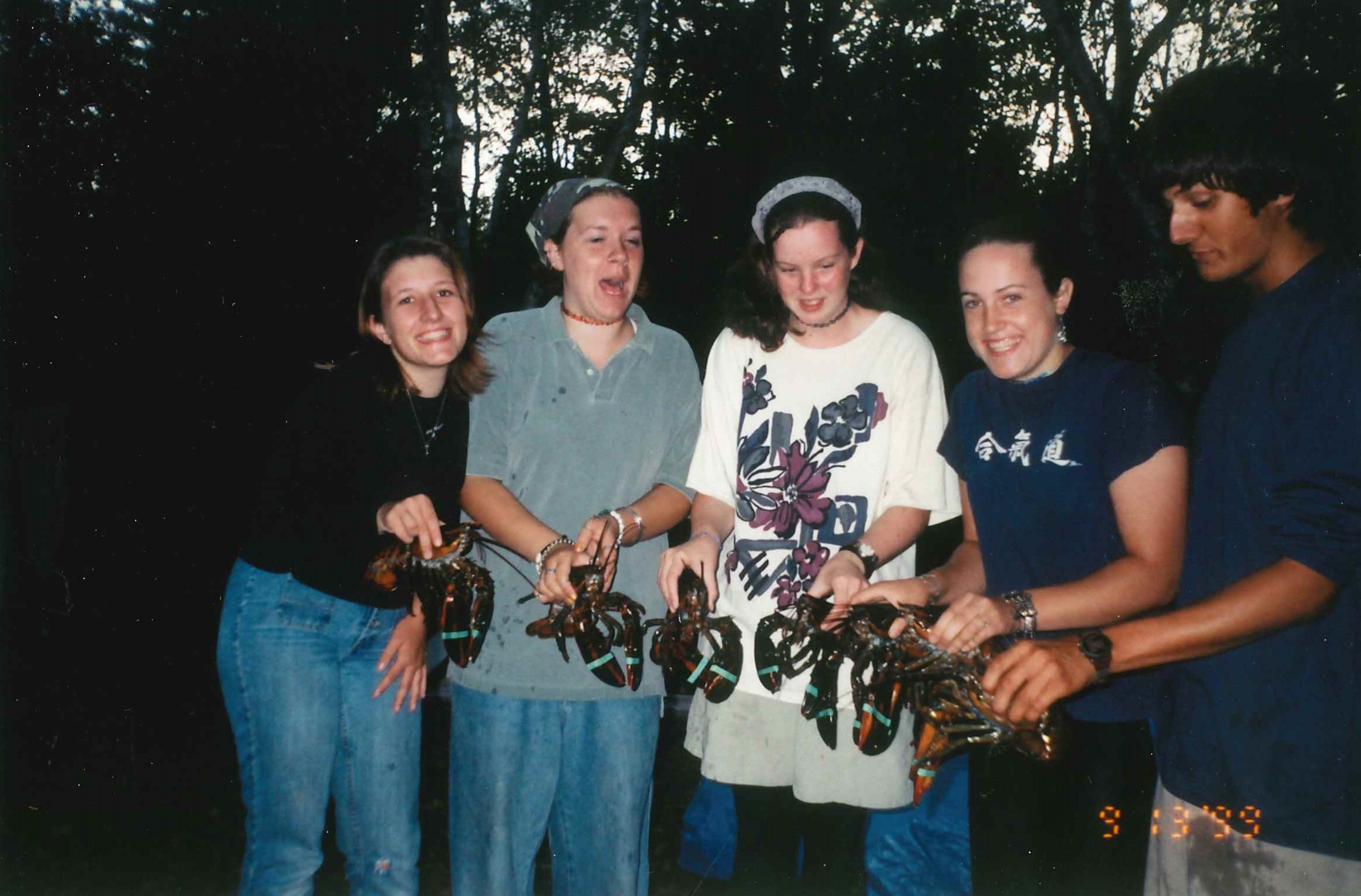
International High School Students Find a Community at RSSAA
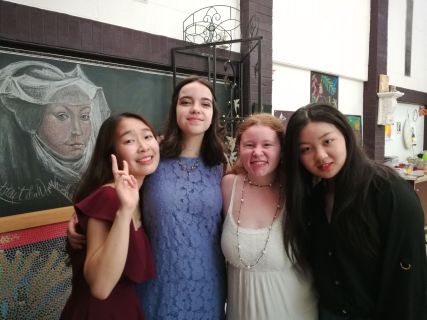 Motivated students and families from around the world look for immersive experiences at American high schools where they can learn English, absorb American culture, and prepare for post-secondary education at English-speaking institutions. As the Waldorf movement continues to grow around the world, some international parents are looking for a Waldorf high school experience when their own country doesn’t have a program established. At the same time, there are international families who have never known about Waldorf education, but appreciate the liberal arts curriculum, community feeling, and host-family experience the Rudolf Steiner High School offers. Over the past 18 years, 75 international students have found their way to Steiner High school and have emerged with skills and relationships that have prepared them for their next steps in life.
Motivated students and families from around the world look for immersive experiences at American high schools where they can learn English, absorb American culture, and prepare for post-secondary education at English-speaking institutions. As the Waldorf movement continues to grow around the world, some international parents are looking for a Waldorf high school experience when their own country doesn’t have a program established. At the same time, there are international families who have never known about Waldorf education, but appreciate the liberal arts curriculum, community feeling, and host-family experience the Rudolf Steiner High School offers. Over the past 18 years, 75 international students have found their way to Steiner High school and have emerged with skills and relationships that have prepared them for their next steps in life.
Mary Zeng (’21) deeply appreciates her experience here. What was important to her, and her family, was to find a school that assisted her learning English along with broad academic coursework. Thanks to our smaller classes, she was able to form supportive relationships with her teachers that continue today. Her immersion in American culture with a Rudolf Steiner School of Ann Arbor high school family both dramatically increased her acquisition of English and gave her a caring environment to navigate her high school years. She sees the relationships she built with classmates, her host family, and the wider Ann Arbor community, as her home-base in America as she attends University of Massachusetts - Amherst.
When Vivian Wang’s (’17) parents were trying to find an American high school for her to attend, they were looking for a good experience both with an English-speaking family - so she could learn the language and culture - and an academic setting that appreciated both the sciences and the arts. Vivian’s host family had a 1-year-old child and they loved getting to know Vivian and 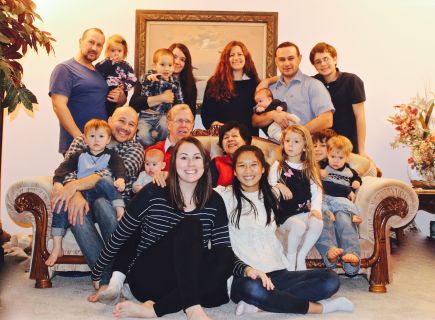 helping her study for classes and learn English. She continues to stay in touch with them and they even helped her move to Atlanta to attend Georgia Tech. Vivian also appreciated the strong relationships she had with her teachers, where she was encouraged to ask questions and be proactive in her learning.
helping her study for classes and learn English. She continues to stay in touch with them and they even helped her move to Atlanta to attend Georgia Tech. Vivian also appreciated the strong relationships she had with her teachers, where she was encouraged to ask questions and be proactive in her learning.
For Irene Zhang (’21), two of the reasons she came to RSSAA were to continue studying at a place that was more artistically oriented, and finding a home-life experience in a city that was safe. In Ann Arbor, she lived with a Chinese-American family who had small children and she had a marvelous experience. She became a part of their family, and they treasured the opportunity to learn from her. She looks forward to visiting them during breaks from her studies at Tufts University.
The host-family experience is just as rewarding as the educational. For many, the international student becomes a part of the family, participating in their customs, meals, and celebrations. Irene’s host mother, Bing Li, found the hosting experience wonderful for her family with two young children. During the pandemic, they got to spend even more time with Irene and she truly became part of their family. High school families enjoy a peer-to-peer experience that can enhance the high school years for their own student as well as their guest student. Some past host families are looking forward to hosting another international student when the opportunity arises.
The city of Ann Arbor is attractive to many international students because of its safety, a large international community (especially for Asian students) and being within the vicinity of the University of Michigan. For a teenager, Ann Arbor provided 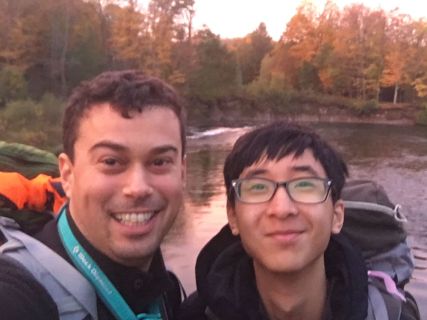 outlets beyond school to connect with others. Mary took tennis lessons at a local club and explored the various teen locales in the region. Irene attended UM football games with friends and immersed herself in artistic experiences. Learning soccer was exciting for Vivian, and she found the coach very helpful and her teammates welcoming. Students also can participate in a variety of after-school clubs, like Model United Nations, that connect them in new ways to their American classmates.
outlets beyond school to connect with others. Mary took tennis lessons at a local club and explored the various teen locales in the region. Irene attended UM football games with friends and immersed herself in artistic experiences. Learning soccer was exciting for Vivian, and she found the coach very helpful and her teammates welcoming. Students also can participate in a variety of after-school clubs, like Model United Nations, that connect them in new ways to their American classmates.
International students at RSSAA also form bonds with each other as they take English as a Second Language (ESL) classes, led by skilled ESL teachers who become a reliable support-system to complete their academic coursework. For some students, these teachers become a sounding-board for other questions or concerns they have during the school year.
Our international students have found a well-balanced program at RSSAA that brings the warmth of a family experience while undertaking an American high school education. For international students and host families alike, an impactful, life-changing experience can happen, and relationships are created that can continue years after graduation!
If you're interested in learning more about how you can help create an amazing experience for an international student, please reach out to Sian Owen-Cruise at sowen-cruise@steinerschool.org.
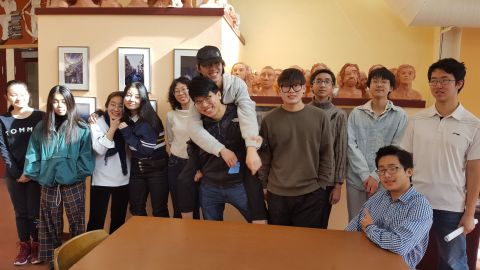
Monthly Observances Help Us Appreciate Our Diversity
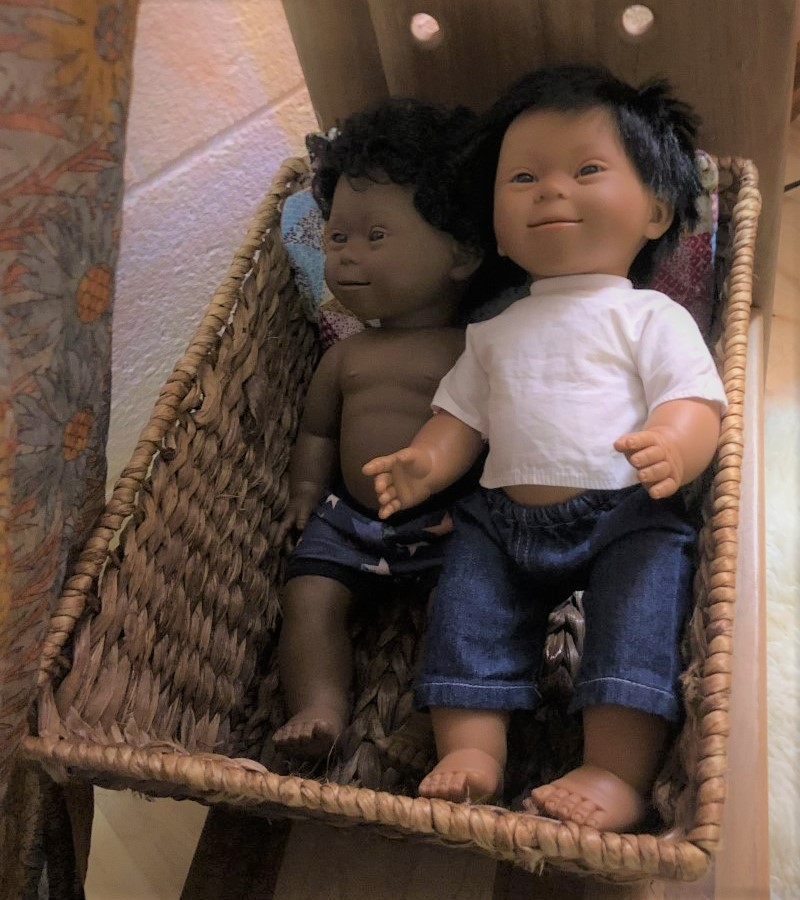 Honoring and celebrating are wonderful ways to teach children about the diversity that makes our world such an amazing place. Part of our school's commitment to diversity, equity, inclusion and justice is to ensure that our curriculum, classroom activities and celebrations include a wide range of diverse and inclusive topics, and one way we do this is by connecting to monthly observances that are held in the wider culture of the United States. Diversity, equity, inclusion and justice work is brought to the students in the everyday classroom, but in addition, the monthly observances give teachers - from Early Childhood through High School - a touch point to making sure specific topics are being offered to our students. Here are just a few examples of monthly observances we share:
Honoring and celebrating are wonderful ways to teach children about the diversity that makes our world such an amazing place. Part of our school's commitment to diversity, equity, inclusion and justice is to ensure that our curriculum, classroom activities and celebrations include a wide range of diverse and inclusive topics, and one way we do this is by connecting to monthly observances that are held in the wider culture of the United States. Diversity, equity, inclusion and justice work is brought to the students in the everyday classroom, but in addition, the monthly observances give teachers - from Early Childhood through High School - a touch point to making sure specific topics are being offered to our students. Here are just a few examples of monthly observances we share:
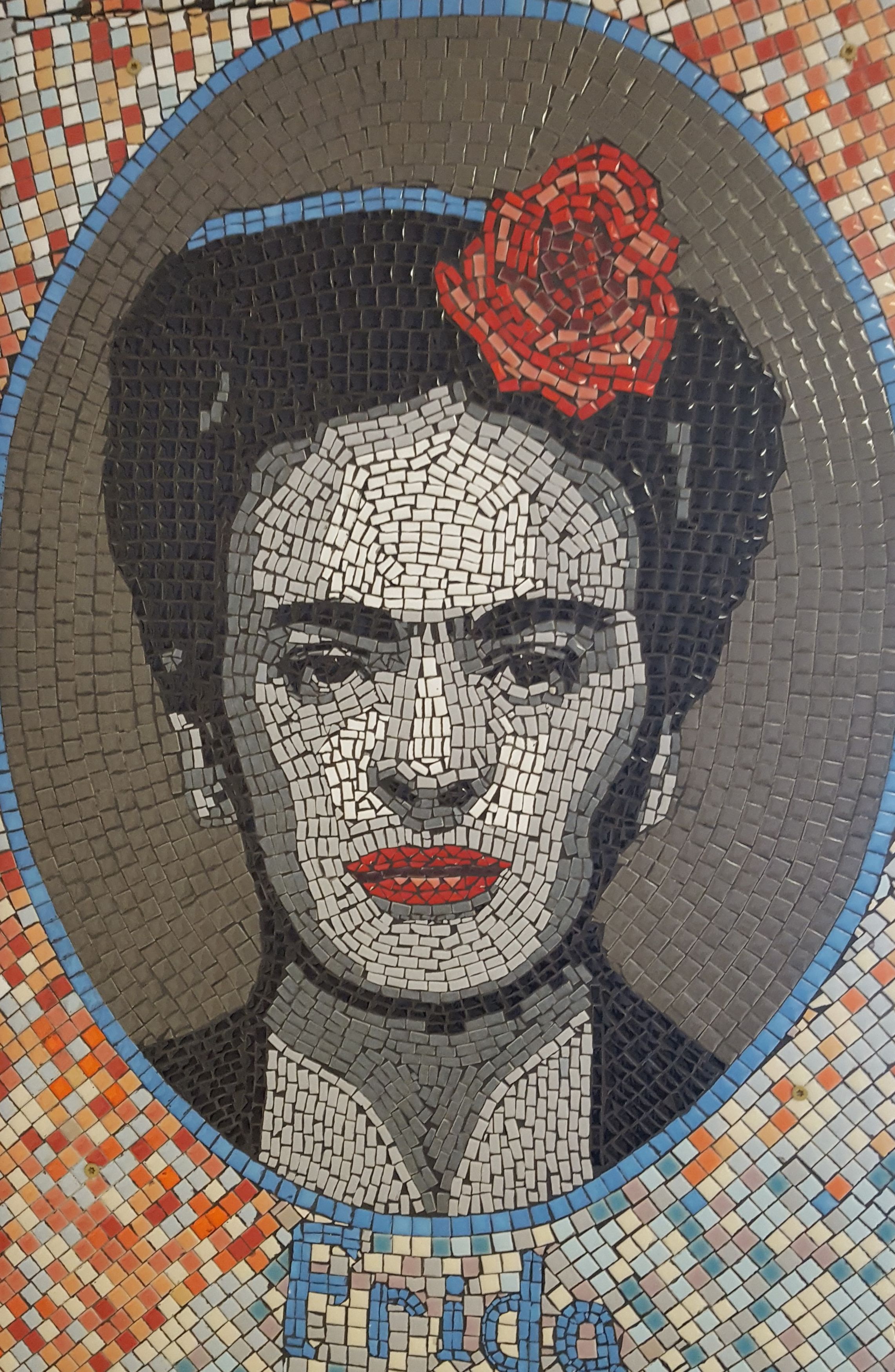 Hispanic (or Lantinx) Heritage Month – September 15-October 15
Hispanic (or Lantinx) Heritage Month – September 15-October 15
Our high school students studied and presented on artist Frida Kahlo. Our Early Childhood Lending Library increased their stock of books about Latinx/Hispanic heritage and culture. Teachers read these books in class with the children and the children can take them home to read. It is important for children to have books in which they can see a reflection of themselves as well as a window into the world of another. Check out our Early Childhood Lending Library Catalog. Many of these books are in our Lending Library and almost all of them can be found in the public library.
Disability Awareness Month – October
So much of what Early Childhood aged children learn is from their environment and through play. We expanded our toy collection in honor of Disability Awareness Month to include inclusive and diverse dolls. Children can now play and care for dolls of all skin tones who have glasses, Down syndrome, a port-a-cath and asthma among others.
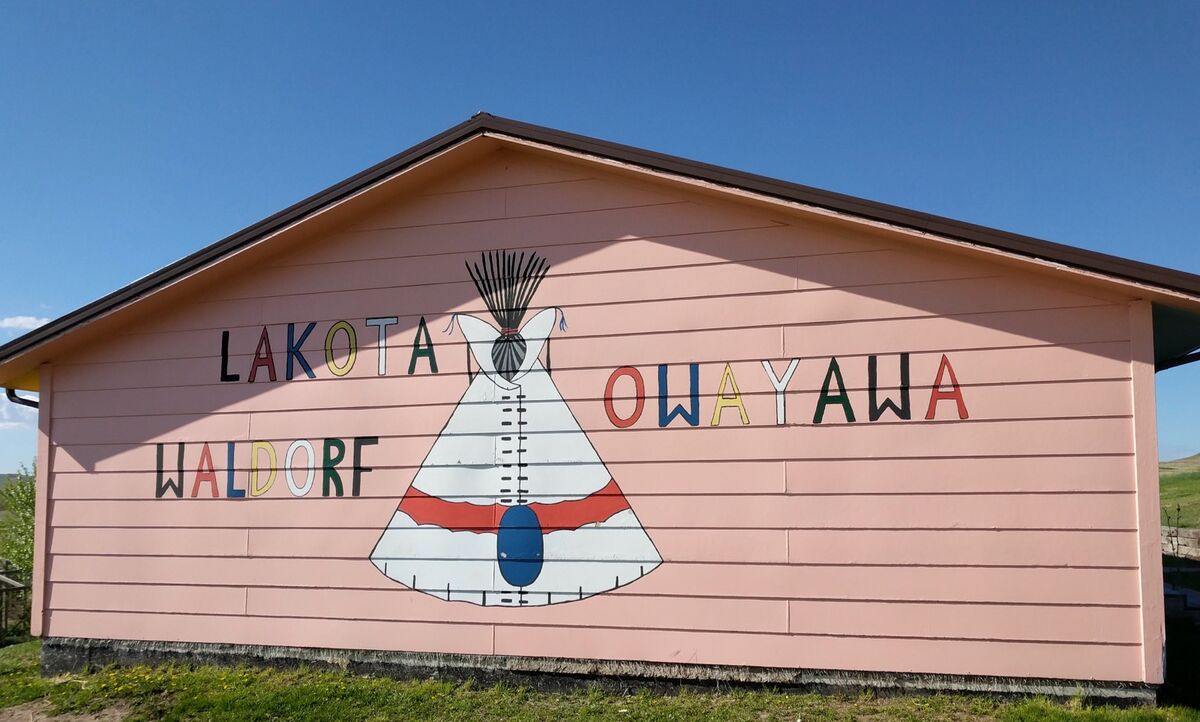 Native American/Indigenous Peoples Heritage Month – November
Native American/Indigenous Peoples Heritage Month – November
Our Grade Five class honored indigenous peoples as part of their daily blessing. Grade Three raised over $6,000 in a fundraiser for Lakota Waldorf School, our sister school on the Oglala Sioux reservation in South Dakota. And, our Early Childhood explored stories of local peoples and planned a visit by indigenous storyteller, Genot Picor, for an active presentation of story and movement about the peoples of the Great Lakes region.
 Black History Month – February
Black History Month – February
Professor Peter Boykin presented at the High School about his family history which included the dismissal of his African American great-great-grandfather from West Point Military Academy after being wrongfully accused of staging his own assault. A book on the subject, Assault at West Point, was later made into a movie and a special ceremony at the White House with former-President Clinton, honoring Johnson Chestnut Whittaker and returning his bible, where he had kept his journal and which had been held by the government as evidence. The students were very engaged during his presentation and were eager to talk about what they could do personally to continue to strive for equality. We will be inviting Mr. Boykin to return to speak more about his family history and the future strive for equality during Black History Month.
We're proud of the long-standing efforts of our school community to recognize and honor all people. We look forward to honoring these months as well as others throughout this year and in future years, and we invite you to participate and share your thoughts, suggestions and celebrations with us!
· March - Women's History Month
· April – Earth and Ecology Month
· May - Asian Pacific Heritage Month
· June - Pride Month
